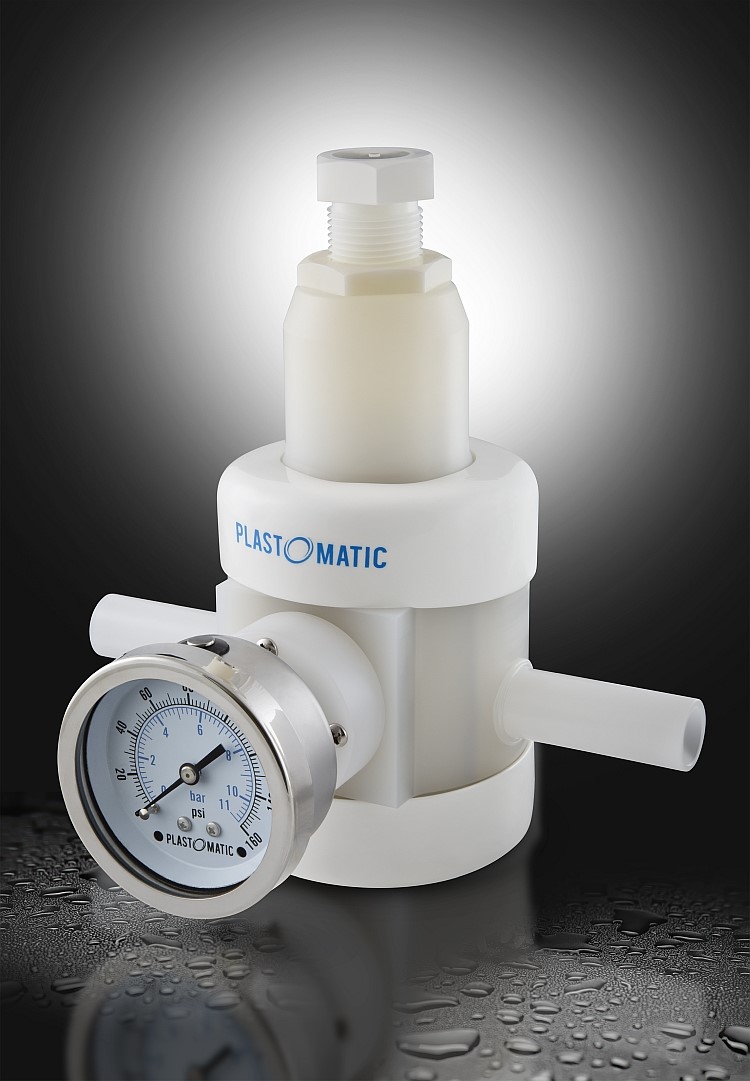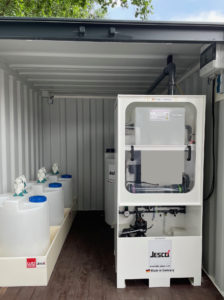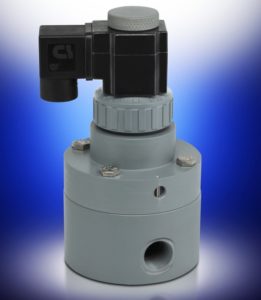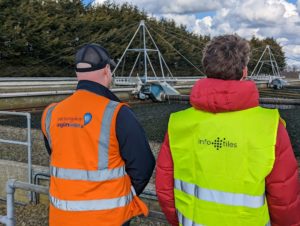Pressure Control and Piping Considerations for Ultrapure Water Systems

Series UPRS Kynar PVDF Regulator with intrinsic Gauge Guard and Kalrez FFKM ultrapure grade perfluoroelastomers. (Image source: Plast-O-Matic Valves Inc.)
- Delivery to points of use of the highest quality water possible, while
- Maintaining the required critical pressures and flows needed to assure such quality water.
In general, water of less than 1 megohm-cm resistivity may be stored (non-flowing) for hours without significant change in quality, while ultra-pure water of 18 megohm-cm resistivity will begin to demonstrate a drop in resistivity after less than one hour. For this reason, a minimum flow velocity of 5 feet per second is necessary to ensure against high purity water degradation.
Pressure Control
For these reasons, pressure control and regulation are the most important aspects of the hydraulic system. A Pressure Regulator, also known as a Pressure Reducing Valve, is the most commonly used device to regulate pressure and flow.
A major design advantage of pressure regulators in high purity systems is the flexibility that they provide. The valves can operate over widely fluctuating user demands, and can be adjusted to meet changing pressure requirement common in such systems due to the variety of treatment components, and their resultant pressure losses. These valves have the ability to fully open and close, as well as assure downstream components are not subjected to pressures above the regulator’s set point.
Considerations for Pressure Gauges
It is therefore essential in the design of an ultrapure water distribution system to monitor the changing pressures inherent throughout the system. This is especially important at the Pressure Regulator(s), to ensure that it is set accurately and functioning properly. Keep in mind that ultra-pure water is extremely corrosive, and the use of chemical Gauge Guards (also called Diaphragm Seals) are critical to isolate the metallic gauge from attack while extending the mechanical life expectancy of the gauge, as well as to prevent metallic contaminants from entering the system.
Additional Considerations
In addition to the Pressure Regulator and Gauge Guard functions, the following criteria should also be considered essential to high purity and ultrapure system design:
- Wetted parts and materials require smooth, non-porous surfaces.
- Materials should not contain biologically degradable substances that can be nutrient sources.
- Materials should not contain leachable additives such as pigments.
- Joining methods should minimize crevices and discontinuities.
- Joining methods should minimize or eliminate the use of cements or solvents capable of migration into the water.
Source: Plast-O-Matic Valves, Inc.






